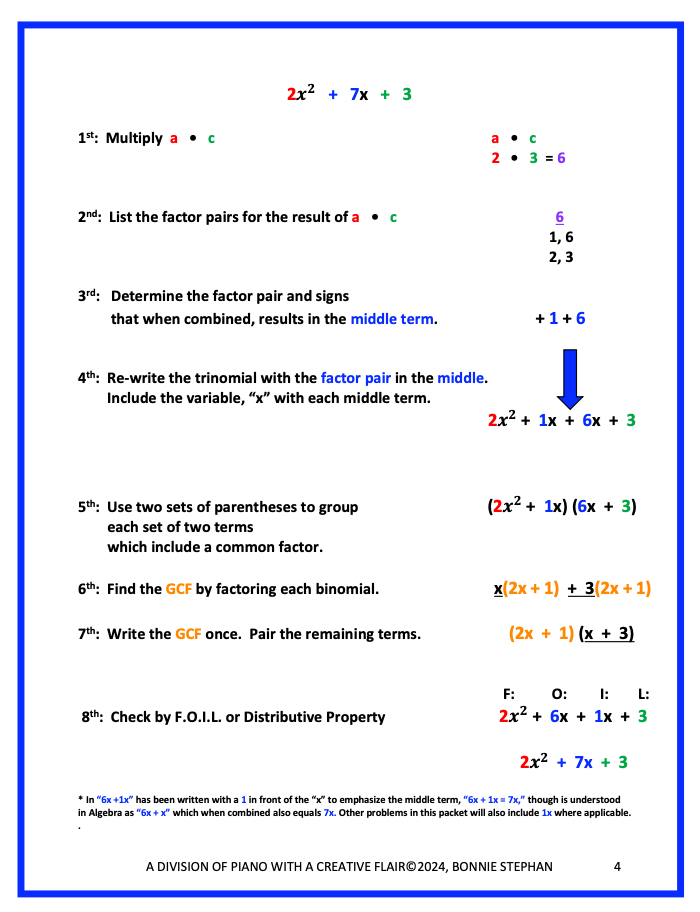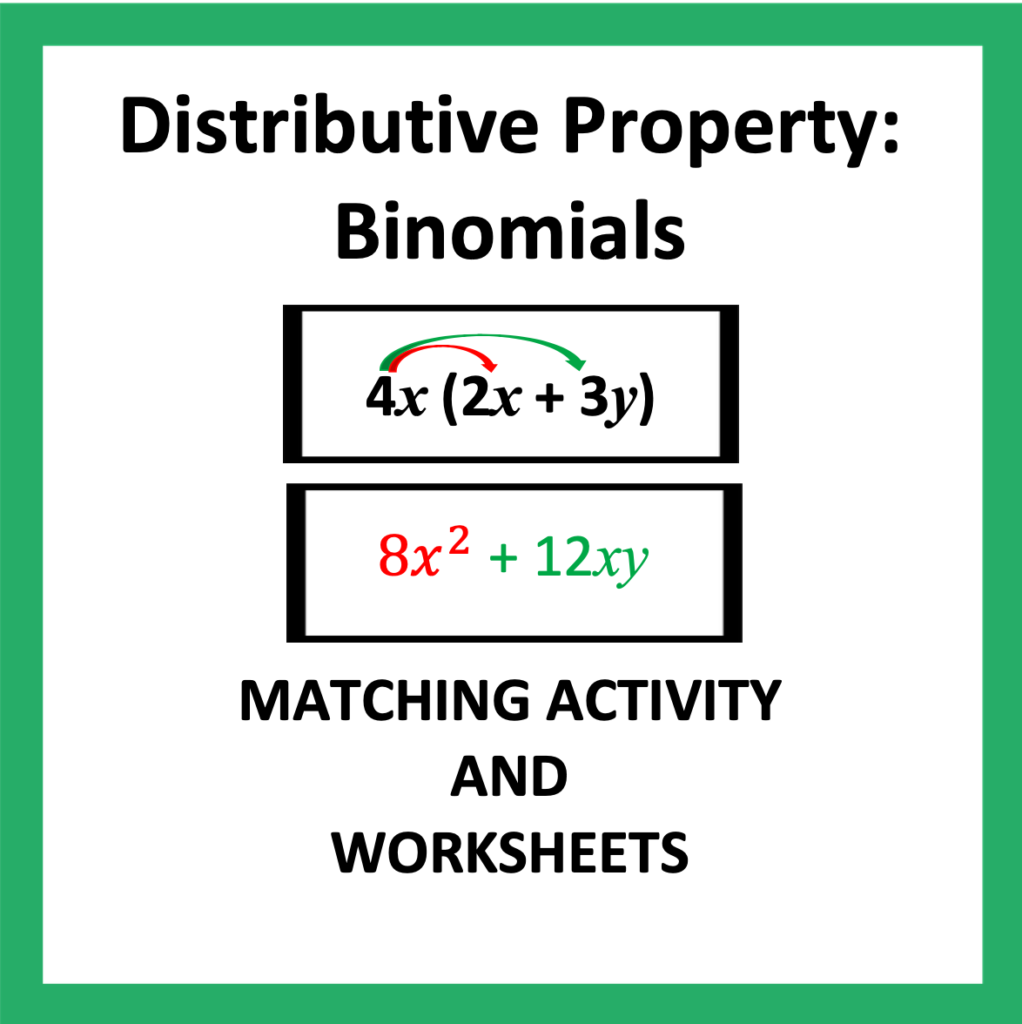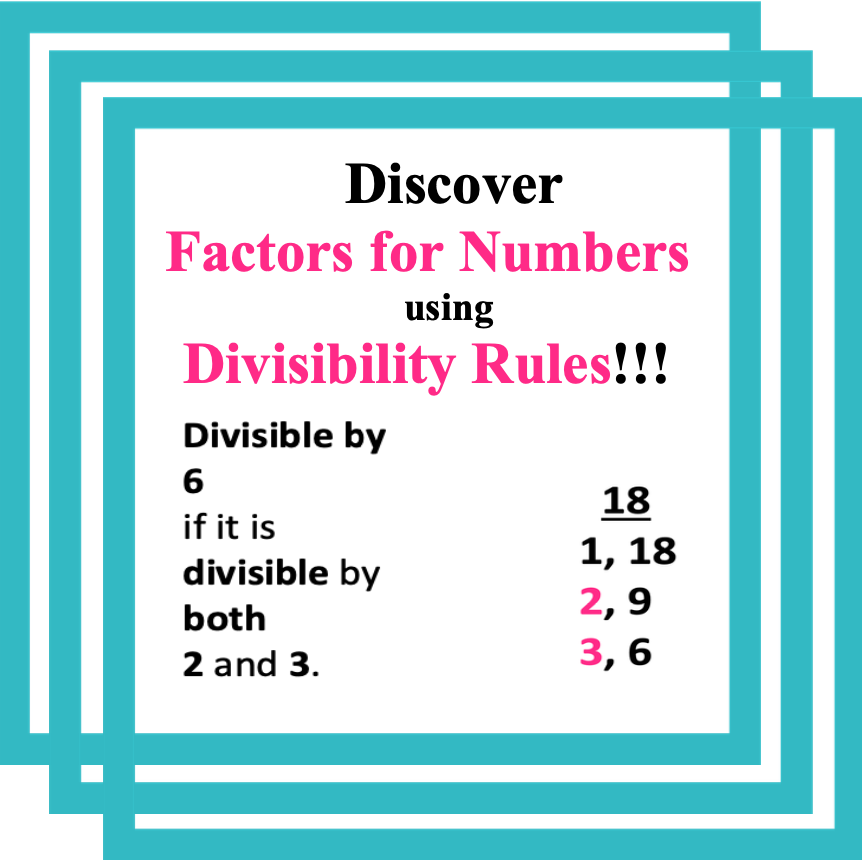Troubles with trinomials? Problems factoring trinomials in which the first term is a co-efficient greater than 1? Wondering where to begin? Are you overwhelmed by the different methods for factoring these types of polynomials? Keep reading to discover the best factoring strategies: when the first coefficient is greater than one.

Contents
- Introduction
- 1. Pre-Requisites for Solving
- 2. Why the Grouping Method is Best
- 3. How to Factor Trinomials When the First Co-Efficient is Greater Than One
- 4. Examples, Guided, and Independent Practice Resources at your Finger-tips
- Conclusion
1. Pre-Requisites for Solving
As teachers, we often believe that students will remember the basic skills for factoring basic binomials and trinomials before teaching students how to factor trinomials when the first coefficient is greater than one. On the other hand, there are always those students who continue to struggle with the basic factoring operations.
Secondary to this, it is ideal, to check for student understanding via assessment or review skills needed for factoring binomials and trinomials. A review of the basic concepts provides a firm foundation for this new concept.
Skills to Review
1st: How to factor numbers and variables
2nd: How to factor binomials and check answers by distributive property
3rd: How to identify the first, middle, and last term of a trinomial
4th: How to factor a trinomial and check the answer by F.O.I.L. or distributive property
5th: How to factor by grouping
When students are confident and efficient with the above skills, they are ready to factor trinomials when the first coefficient is greater than one.
2. Why the Grouping Method is Best
Though there are other methods, the grouping method is best. Why? Students who have learned factoring by grouping have already learned half of the steps needed for factoring.
3. How to Factor Trinomials When the First Co-Efficient is Greater Than One
The first four basic steps include multiplication, factoring a number, selecting a factor pair, and inserting the factor pair inside the original trinomial. Factoring by grouping is completed in the last 4 steps. See the illustrated, step-by-step example, below.

4. Examples, Guided, and Independent Practice Resources at your Finger-tips
Students need examples, guided practice, and independent practice to master this concept. This practice needs to be presented in an orderly fashion. Using a color-coded approach significantly helps visual learners. For those students who need extra guidance, templates with step-by-step directions will increase students’ ability to work more independently. After students are provided structured instruction through the use of examples and guided practice, they are more likely to be successful in completing additional practice problems from their textbooks or other sources.
Wondering where to find examples, guided practice, and independent practice pages? I’ve got you covered. Visit my store to find Best Factoring Strategies: When the First Co-Efficient is Greater than 1, https://www.teacherspayteachers.com/Store/Bonnie-Stephan

This packet provides:
3 Examples, with detail and step-by-step instructions
Guided Practice, with detail and step-by-step templates with 5 problems and answers written in a step-by-step format
15 Independent Practice Problems, answers included
2 templates:
Template 1: Written, step-by-step directions and blanks for practicing other problems
Template 2: Slightly larger template without written directions, though example pages provided earlier
in the packet may be used if needed.
Easy! Just print and go!
*If there is a color-coding system you are already using, a packet without color-coding is also included in the same packet.
Conclusion
By reviewing concepts previously learned, such as factoring binomials, trinomials, and factoring by grouping, students are best prepared to include this learning with additional steps for factoring trinomials in which the first coefficient is greater than one. The use of examples, guided practice, and independent practice through the use of templates and color-coding provides students with confidence and direction for independence and success with these types of problems.





